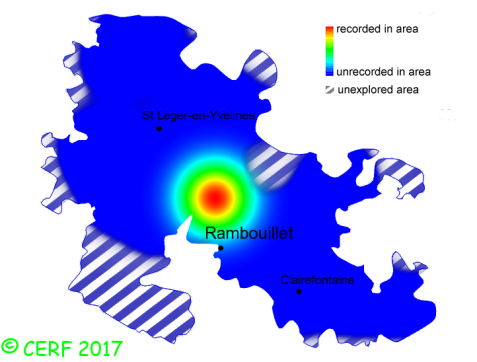New classification: Basidiomycota/Agaricomycotina/Agaricomycetes/Incertae sedis/Russulales/Russulaceae
Former classification: Basidiomycota/Homobasidiomycetes/Agaricomycetideae/Russulales/Russulaceae
edibility : inedible
|
|
|
The cap is yellow brown, vinaceous brown (at disk) to lilac, convex then depressed; its margin is striate.
The cap surface is not viscid nor sticky.
The stem is white then yellowish, without ring.
The flesh is unchanging or slightly yellowing when exposed to air; its taste is mild to slightly acrid; the odour is aromatic, fruity of green apples, pelargonium or honey;
its texture is grainy (breaking like a chalk stick).
The gills are yellowish, narrowly adnate, distant .
The spore print is yellow. This species is mycorrhizal.
It grows on the ground, in forest edges or clearings of broad-leaved or mixed woods, most of the time with oak.
The fruiting period takes place from July to November.
| Dimensions: | width of cap approximately 4 cm (between 2.5 and 8 cm) |
| | height of stem approximately 5 cm (between 2.5 and 8 cm) |
| | thickness of stem (at largest section) approximately 9 mm (between 5 and 10 mm) |
Chemical tests : flesh becoming orange pink when in contact with iron sulphate; positive and quite fast reaction to Ga´ac (bright blue);.
Distinctive features : small and fragile species (3-4 cm across); cream then bright yellow gills; flesh and stem becoming yellow with age; soft stem; strong odour (applesauce, pelargonium or honey); in wood edges
Russula odorata is rare and confined in the forest of Rambouillet, and is quite rare, more generally speaking
.
|  | | Above : distribution map of Russula odorata in the forest of Rambouillet |
|
page updated on 14/01/18
